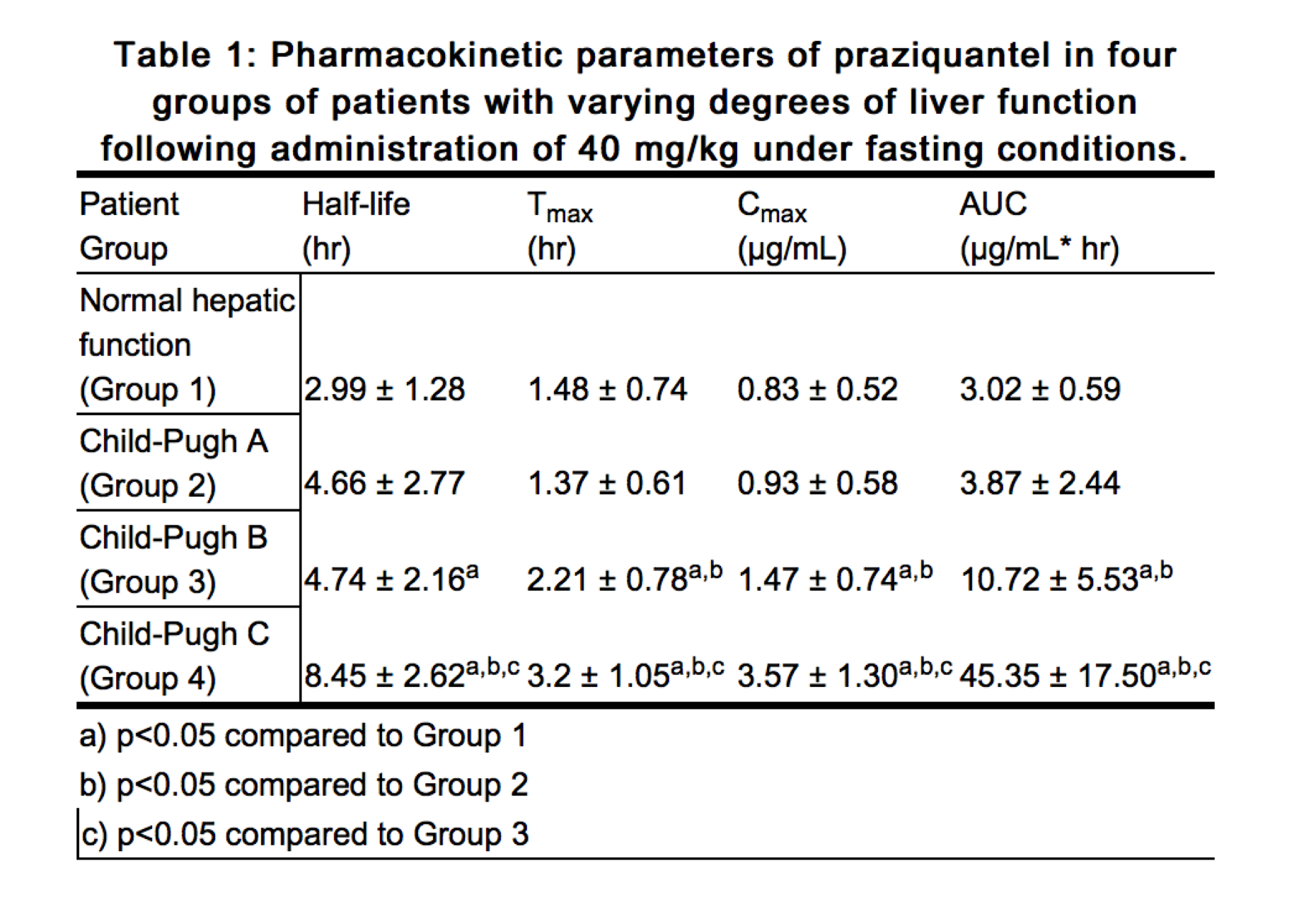Praziquantel clinical pharmacology
Editor-In-Chief: C. Michael Gibson, M.S., M.D. [1]
Clinical Pharmacology
Praziquantel induces a rapid contraction of schistosomes by a specific effect on the permeability of the cell membrane. The drug further causes vacuolization and disintegration of the schistosome tegument.
After oral administration BILTRICIDE is rapidly absorbed (80%), subjected to a first pass effect, metabolized and eliminated by the kidneys. Maximal serum concentration is achieved 1-3 hours after dosing. The half-life of praziquantel in serum is 0.8-1.5 hours.
Special Populations
The pharmacokinetics of praziquantel were studied in 40 patients with Schistosoma mansoni infections with varying degrees of hepatic dysfunction (See table1). In patients with schistosomiasis, the pharmacokinetic parameters did not differ significantly between those with normal hepatic function (Group 1) and those with mild (Child-Pugh class A) hepatic impairment. However, in patients with moderate-to-severe hepatic dysfunction (Child-Pugh class B and C), praziquantel half-life, Cmax, and AUC increased progressively with the degree of hepatic impairment. In Child-Pugh class B, the increases in mean half-life, Cmax, and AUC relative to Group 1 were 1.58-fold, 1.76-fold, and 3.55-fold, respectively. The corresponding increases in Child-Pugh class C patients were 2.82-fold, 4.29-fold, and 15-fold for half-life, Cmax, and AUC.[1]
 |
References
Adapted from the FDA Package Insert.